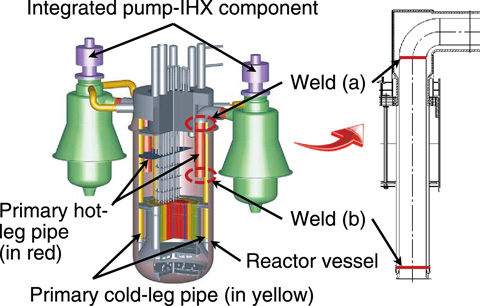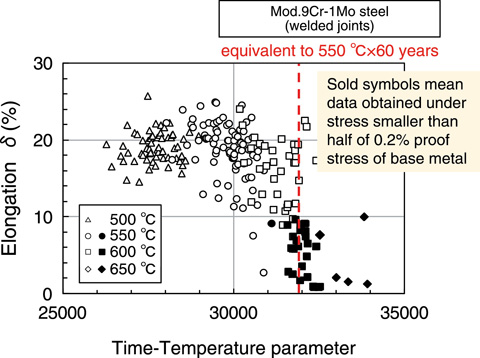
Fig.2-7 Schematic view of the JSFR RV and primary systems

Fig.2-8 Observed creep rupture elongation for Mod.9Cr-1Mo steel welds
For Sodium cooled Fast Reactors (SFR), a compact plant design will be achieved by shortening the pipe length and employing Mod.9Cr-1Mo steel (Fig.2-7), which has a low thermal expansion rate and excellent creep strength. However, it is believed that the creep strength of welds of high-chromium ferritic steels, such as Mod.9Cr-1Mo steel, degrade compared to those of the base metals, particularly after long-term use and in high-temperature regions. In the Japanese technical standard for thermal power plant component design the allowable stress for these steel welds has been reduced because of Type-IV damage. In this study, available creep test results for welds were analyzed considering the possible failure mechanisms, and the validity of the SFR pipe designs with acceptable margins was verified.
As shown in Fig.2-8, significantly small ductility was observed in the long-term creep tests, which were performed with a stress less than half of the 0.2% proof stress of the base metal. In addition, the failure position observed in the creep tests shifted from the base metal to the heat-affected zone with an increase in the creep rupture time. As a result, in Mod.9Cr-1Mo steel welds, it was clarified that the failure mechanism shifts from ductile creep to Type-IV failure with an increase in the creep rupture time. Therefore, creep characteristic equations for Mod.9Cr-1Mo steel welds were proposed on the basis of the individual polynomial regressions for the long-term and short-term regions.
In addition, the distribution of the ratio of observed creep lives to calculated creep lives in the long-term region was remarkably smaller than that in the short-term region. Thus, individual safety factors were proposed, and 60 year creep damage was evaluated for two welds in the hot-leg pipe of an SFR, as shown in Fig.2-7. As a result, it was confirmed that the stress at the welds was smaller than the allowable stress, and that the SFR pipe was designed with enough reliability.